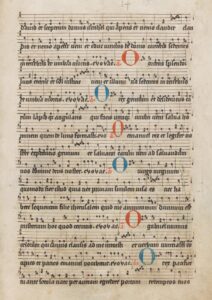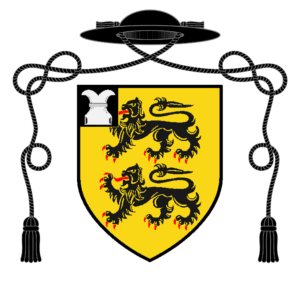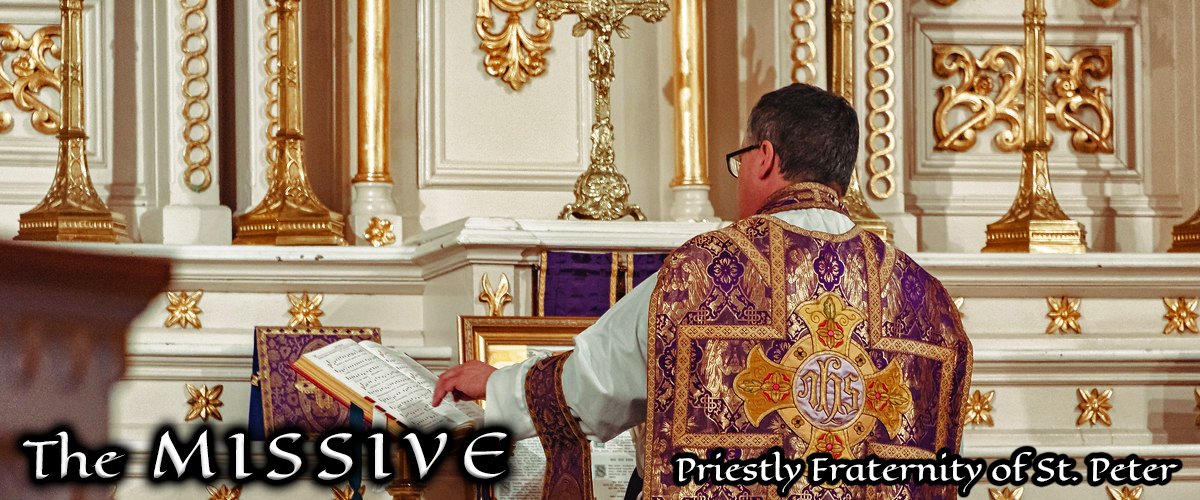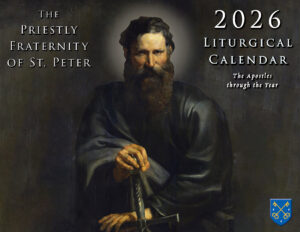“Fear Not: For on the Fifth Day, Our Lord Shall Come Unto You”
by Fr. William Rock, FSSP

The Greater Ferias of Advent, December 17th to 23rd, the final days of Advent, are set aside by Holy Mother Church to serve as a proximate preparation for the Nativity of the Lord. The most noted feature of these days is the “Great Antiphons” or the “O Antiphons” (as they all start with “O”) sung at Vespers in the evening of each of these Greater Ferias. Each of these Magnificat antiphons invokes the Messias under a different title: Sapientia (Wisdom), Adonaï (Lord), Radix Jesse (Root of Jesse), Clavis David (Key of David), Oriens (Orient / Day-spring), Rex Gentium (King of the Nations / King of the Gentiles), and lastly Emmanuel (Emmanuel / God is with us). These antiphons form the basis of the Advent hymn O Come, O Come Emmanuel. But these O Antiphons are not the only point of interest during this time.
On the morning of December 21st, the Feast of St. Thomas, the following Antiphon is prayed after the oration of the Apostle as part of the commemoration of the Greater Feria: “Nolíte timére; quinta enim die véniet ad vos Dóminus noster / Fear not: for on the fifth day, Our Lord shall come unto you [plural].”1 It should be noted that the fifth day is to be determined by counting inclusively, which is how the Romans and Hebrews counted. This means December 21st is the first day, the 22nd, the second, and so on until the fifth day, December 25th, Christmas Day. But even understanding this, the antiphon is still mysterious. Unfortunately, no interpretation is provided either by William Durandus, the great medieval liturgical commentator, or by Dom Prosper Guéranger (although the latter does provide the text).

To begin with, the question can be asked: why the fifth day and not another? As the antiphon is not a direct quote from Sacred Scripture, there is no direct scriptural context which can serve as basis for the interpretation. Five days, however, does enter into the story of Judith. Fearing the might of the army of Holofernes, Ozias, the prince of Juda, promised to surrender if God did not deliver them within five days (Jdt 7:23). Upon hearing of this, Judith rebuked this tempting of God, but yet said to elders Chabri and Charmi, “You shall stand at the gate this night, and I will go out with my maidservant: and pray ye, that as you have said, in five days the Lord may look down upon his people Israel” (Jdt 8:32). After preparing herself spiritually and physically, Judith and her maid went out of the city to the enemy camp. She was received favorably by the general and given a degree of freedom. On the fourth day (Jdt 12:10), Judith was invited into Holofernes’ tent, an invitation which she accepted. That evening, Judith beheaded Holofernes, and it was on the fifth day that the army, realizing that Holofernes was dead, fled in retreat. So it was that God did indeed deliver His people on the fifth day, unexpectedly, by the hand of a woman.
Now, according to Dr. Nathanael Schmiedicke’s Handy Guide to Biblical Numerology, the number five can be seen as representing “unexpected victory / salvation / life / blessing.” In support of this, Dr. Schmiedicke explains that David had five stones when he defeated Goliath (1 Kin [Sam] 17:40), which was certainly an unexpected victory. Additionally, “Day 5 of creation is the first one to use the word for ‘soul’ and for ‘living’ to describe water and air animals (Gen 1:20). Also, this is the first day God blesses anything (Gen 1:22).” This interpretation of the number five fits well with the story of Judith, for God brought about through her an “unexpected victory,” which brought salvation and life to the Hebrew people, as well as material blessings in the spoils taken from the fleeing enemy’s camp.

Using this Biblical-numerical interpretation of five and the story of Judith, the Lauds antiphon under consideration can be read as follows: “Fear not the enemies which surround you and threaten your destruction: for on the fifth day, Our Lord shall come unto you and will bring about something unexpected through a woman, the true Judith, the Virgin birth of the Incarnate Son of God Who will win a victory which will bring salvation to His people, meriting for them the life of grace and other blessings.”
Additionally, it is worth noting that December 21st is the typical date of the winter solstice in the northern hemisphere, the day with the shortest amount of sunlight each year (and also the start of astronomical winter).s It is fitting, then, that the Great Antiphon for this evening is O Oriens (O Orient! splendor of eternal light, and Sun of justice! come and enlighten those sitting in darkness, and in the shadow of death).3 For, from this day forward, from the singing of the O Antiphon evoking Our Lord as the Orient (Day-spring / Dawn / Sunrise), the amount of daylight per day will steadily increase. As such, there is a fittingness of having the comfort of the Nolíte timére Antiphon also on this day when the darkness of night, symbolizing evil, seems to triumph over the light of day, symbolizing goodness. With this in mind, the Lauds antiphon can be read as follows: “Fear not the seeming triumph of the darkness of evil: for on the fifth day, Our Lord, the Orient, the splendor of eternal light, and Sun of justice, shall come to unto you to enlighten those sitting in darkness, and in the shadow of death.”
May these thoughts accompany the faithful, who fear not the darkness of evil, as they make their final preparations, both spiritually and physically, for the approaching Feast of the Nativity of their Lord.
Fr. Wiliam Rock, FSSP was ordained in the fall of 2019 and is currently assigned to Regina Caeli Parish in Houston, TX.
- Guéranger, Prosper. The Liturgical Year, vol. 1 (Advent). Trans. Shepherd, Laurence. (Fitzwilliam: Loreto Publications, 2000), p. 494.
- “At the time of the Julian reform [of the calendar] the sun passed the vernal equinox on 25 March, but by the time of the Council of Nicæa (A.D. 325) this had been changed for the 21st” of March (Old Catholic Encyclopedia, s.v. “Reform of the Calendar”). Presuming this shift also effected the winter solstice (moving the date from 25 December [see Guéranger, Advent, pp. 308-309] to 21 December), and also presuming that the O Antiphons were “known and used as early as the beginning of the sixth century [A.D. 500s]” (Cabaniss, J. Allen. Liturgy and Literature – Selected Essays. “A Note on the Date of the Great Advent Antiphons”. [University of Alabama, 1970], p. 100), the O Oriens Antiphon would have always been associated with the 21 December winter solstice date. Perhaps the Nolíte timére Antiphon was assigned this date to also specifically coincide with the 21 December winter solstice.
- See Guéranger, p. 500.
December 21, 2023








